This article was co-authored by Mario Banuelos, PhD. Mario Banuelos is an Assistant Professor of Mathematics at California State University, Fresno. With over eight years of teaching experience, Mario specializes in mathematical biology, optimization, statistical models for genome evolution, and data science. Mario holds a BA in Mathematics from California State University, Fresno, and a Ph.D. in Applied Mathematics from the University of California, Merced. Mario has taught at both the high school and collegiate levels.
wikiHow marks an article as reader-approved once it receives enough positive feedback. In this case, several readers have written to tell us that this article was helpful to them, earning it our reader-approved status.
This article has been viewed 1,118,303 times.
When straight lines intersect on a two-dimensional graph, they meet at only one point,[1] described by a single set of - and -coordinates. Because both lines pass through that point, you know that the - and - coordinates must satisfy both equations. With a couple extra techniques, you can find the intersections of parabolas and other quadratic curves using similar logic.
Steps
Finding the Intersection of Two Straight Lines
-
1Write the equation for each line with on the left side. If necessary, rearrange the equation so is alone on one side of the equal sign. If the equation uses or instead of , separate this term instead. Remember, you can cancel out terms by performing the same action to both sides.
-
2Set the right sides of the equation equal to each other. We're looking for a point where the two lines have the same and values; this is where the lines cross. Both equations have just on the left side, so we know the right sides are equal to each other. Write a new equation that represents this.
- For example, if you want to know where the lines y = x + 3 crosses y = 12 - 2x, you'd equate them by writing x + 3 = 12 - 2x.[3]
Advertisement -
3Solve for x. The new equation only has one variable, . Solve this using algebra, by performing the same operation on both sides. Get the terms on one side of the equation, then put it in the form .[4] (If this is impossible, skip down to the end of this section.)
- Example:
- Add to each side:
- Subtract 3 from each side:
- Divide each side by 3:
- .
-
4Use this -value to solve for . Choose the equation for either line. Replace every in the equation with the answer you found. Do the arithmetic to solve for .[5]
- Example: and
-
5Check your work. It's a good idea to plug your -value into the other equation and see if you get the same result. If you get a different solution for , go back and check your work for mistakes.[6]
- Example: and
- This is the same answer as before. We did not make any mistakes.
-
6Write down the and coordinates of the intersection. You've now solved for the -value and -value of the point where the two lines intersect. Write down the point as a coordinate pair, with the -value as the first number.[7]
- Example: and
- The two lines intersect at (3,6).
-
7Deal with unusual results. Some equations make it impossible to solve for . This doesn't always mean you made a mistake. There are two ways a pair of lines can lead to a special solution:
- If the two lines are parallel, they do not intersect. The terms will cancel out, and your equation will simplify to a false statement (such as ). Write "the lines do not intersect" or no real solution" as your answer.
- If the two equations describe the same line, they "intersect" everywhere. The terms will cancel out and your equation will simplify to a true statement (such as ). Write "the two lines are the same" as your answer.
Problems with Quadratic Equations
-
1Recognize quadratic equations. In a quadratic equation, one or more variables is squared ( or ), and there are no higher powers. The lines these equations represent are curved, so they can intersect a straight line at 0, 1, or 2 points. This section will teach you how to find the 0, 1, or 2 solutions to your problem.
-
2Write the equations in terms of y. If necessary, rewrite each equation so y is alone on one side.
- Example: Find the intersection of and .
- Rewrite the quadratic equation in terms of y:
- and .
- This example has one quadratic equation and one linear equation. Problems with two quadratic equations are solved in a similar way.
-
3Combine the two equations to cancel out the y. Once you've set both equations equal to y, you know the two sides without a y are equal to each other.
- Example: and
-
4Arrange the new equation so one side is equal to zero. Use standard algebraic techniques to get all the terms on one side. This will set the problem up so we can solve it in the next step.
- Example:
- Subtract x from each side:
- Subtract 7 from each side:
-
5Solve the quadratic equation. Once you've set one side equal to zero, there are three ways to solve a quadratic equation. Different people find different methods easier. You can read about the quadratic formula or "completing the square", or follow along with this example of the factoring method:
- Example:
- The goal of factoring is to find the two factors that multiply together to make this equation. Starting with the first term, we know can divide into x, and x. Write down (x )(x ) = 0 to show this.
- The last term is -6. List each pair of factors that multiply to make negative six: , , , and .
- The middle term is x (which you could write as 1x). Add each pair of factors together until you get 1 as an answer. The correct pair of factors is , since .
- Fill out the gaps in your answer with this pair of factors: .
-
6Keep an eye out for two solutions for x. If you work too quickly, you might find one solution to the problem and not realize there's a second one. Here's how to find the two x-values for lines that intersect at two points:
- Example (factoring): We ended up with the equation . If either of the factors in parentheses equal 0, the equation is true. One solution is → . The other solution is → .
- Example (quadratic equation or complete the square): If you used one of these methods to solve your equation, a square root will show up. For example, our equation becomes . Remember that a square root can simplify to two different solutions: , and . Write two equations, one for each possibility, and solve for x in each one.
-
7Solve problems with one or zero solutions. Two lines that barely touch only have one intersection, and two lines that never touch have zero. Here's how to recognize these:
- One solution: The problems factor into two identical factors ((x-1)(x-1) = 0). When plugged into the quadratic formula, the square root term is . You only need to solve one equation.
- No real solution: There are no factors that satisfy the requirements (summing to the middle term). When plugged into the quadratic formula, you get a negative number under the square root sign (such as ). Write "no solution" as your answer.
-
8Plug your x-values back into either original equation. Once you have the x-value of your intersection, plug it back into one of the equations you started with. Solve for y to find the y-value. If you have a second x-value, repeat for this as well.
- Example: We found two solutions, and . One of our lines has the equation . Plug in and , then solve each equation to find that and .
-
9Write the point coordinates. Now write your answer in coordinate form, with the x-value and y-value of the intersection points. If you have two answers, make sure you match the correct x-value to each y-value.
- Example: When we plugged in , we got , so one intersection is at (2, 9). The same process for our second solution tells us another intersection lies at (-3, 4).
Practice Problems and Answers
Expert Q&A
Did you know you can get expert answers for this article?
Unlock expert answers by supporting wikiHow
-
QuestionWhat happens if the x's cancel out?
 Mario Banuelos, PhDMario Banuelos is an Assistant Professor of Mathematics at California State University, Fresno. With over eight years of teaching experience, Mario specializes in mathematical biology, optimization, statistical models for genome evolution, and data science. Mario holds a BA in Mathematics from California State University, Fresno, and a Ph.D. in Applied Mathematics from the University of California, Merced. Mario has taught at both the high school and collegiate levels.
Mario Banuelos, PhDMario Banuelos is an Assistant Professor of Mathematics at California State University, Fresno. With over eight years of teaching experience, Mario specializes in mathematical biology, optimization, statistical models for genome evolution, and data science. Mario holds a BA in Mathematics from California State University, Fresno, and a Ph.D. in Applied Mathematics from the University of California, Merced. Mario has taught at both the high school and collegiate levels.
Assistant Professor of Mathematics
-
QuestionF(x)=2^2=12x+10 , g(x)=38
 Community AnswerI suspect that you copied this problem down wrong. I'll deal with what you wrote first, and then I'll talk about what I think you may have meant. As written, the first function says F(x)=2^2=12x+10. In other words, this is a simple one variable equation that simplifies to 4=12x+10. Then subtract 10 from both sides to get -6=12x. Finally, divide both sides by 12 to get -1/2 = x. You now have two different functions, each with a single variable. F(x): x=-1/2, and G(x): x=38. Any function that has only a single variable like this, x=__, is going to be a vertical straight line at that value. As a result, these two lines will never intersect, and there is no single solution for F(x) and G(x) simultaneously. That is not a very interesting solution, which makes me think you copied it wrong. I think that what you probably meant is F(x)=x^2 + 12x + 10. I think you wrote 2^2 instead of x^2, and then you changed a + symbol into an = symbol in the middle of the function. (The + and = are the same button on most keyboards.) This becomes a more interesting problem. You could now work on factoring the first function, but you don't need to do that much work. If you notice, the second function, G(x), is already solved. It is the single value, G(x)=38. This means that the graph of that function is a straight vertical line. At every point on the line, x=38. So to solve the system, just insert the value 38 for x in the first equation: F(x)=38^2+12(38)+10. This equals 1444+456+10, which is F(x)=1910. So the solution where those two graphs cross is x=38, y=1910. You can write the coordinate pair as (38,1910).
Community AnswerI suspect that you copied this problem down wrong. I'll deal with what you wrote first, and then I'll talk about what I think you may have meant. As written, the first function says F(x)=2^2=12x+10. In other words, this is a simple one variable equation that simplifies to 4=12x+10. Then subtract 10 from both sides to get -6=12x. Finally, divide both sides by 12 to get -1/2 = x. You now have two different functions, each with a single variable. F(x): x=-1/2, and G(x): x=38. Any function that has only a single variable like this, x=__, is going to be a vertical straight line at that value. As a result, these two lines will never intersect, and there is no single solution for F(x) and G(x) simultaneously. That is not a very interesting solution, which makes me think you copied it wrong. I think that what you probably meant is F(x)=x^2 + 12x + 10. I think you wrote 2^2 instead of x^2, and then you changed a + symbol into an = symbol in the middle of the function. (The + and = are the same button on most keyboards.) This becomes a more interesting problem. You could now work on factoring the first function, but you don't need to do that much work. If you notice, the second function, G(x), is already solved. It is the single value, G(x)=38. This means that the graph of that function is a straight vertical line. At every point on the line, x=38. So to solve the system, just insert the value 38 for x in the first equation: F(x)=38^2+12(38)+10. This equals 1444+456+10, which is F(x)=1910. So the solution where those two graphs cross is x=38, y=1910. You can write the coordinate pair as (38,1910). -
QuestionWhen the lines intersect at (3,6), what could represent the two lines?
 DonaganTop AnswererThe lines could be x = 3 and y = 6.
DonaganTop AnswererThe lines could be x = 3 and y = 6.
References
- ↑ https://science.jrank.org/pages/3019/Geometry-Points-lines-planes.html
- ↑ Mario Banuelos, PhD. Assistant Professor of Mathematics. Expert Interview. 11 December 2021.
- ↑ Mario Banuelos, PhD. Assistant Professor of Mathematics. Expert Interview. 11 December 2021.
- ↑ Mario Banuelos, PhD. Assistant Professor of Mathematics. Expert Interview. 11 December 2021.
- ↑ Mario Banuelos, PhD. Assistant Professor of Mathematics. Expert Interview. 11 December 2021.
- ↑ Mario Banuelos, PhD. Assistant Professor of Mathematics. Expert Interview. 11 December 2021.
- ↑ Mario Banuelos, PhD. Assistant Professor of Mathematics. Expert Interview. 11 December 2021.
- ↑ https://www.mathsisfun.com/algebra/circle-equations.html
- ↑ http://www.mathwarehouse.com/ellipse/equation-of-ellipse.php
About This Article
To algebraically find the intersection of two straight lines, write the equation for each line with y on the left side. Next, write down the right sides of the equation so that they are equal to each other and solve for x. Write down one of the two equations again, substituting the previous answer in place of x, and solve for y. These answers will give you the x and y coordinates of the intersection. To learn how to find the intersection when working with quadratic equations, keep reading!


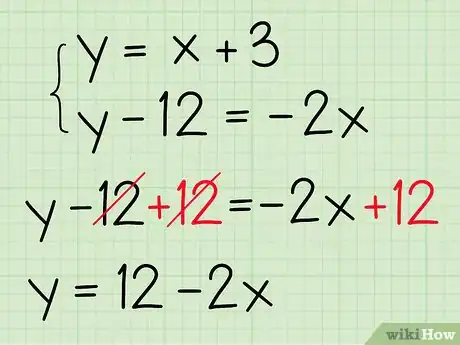







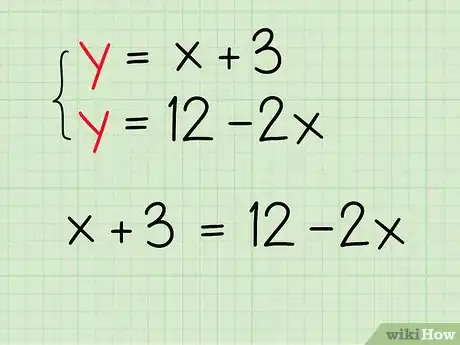
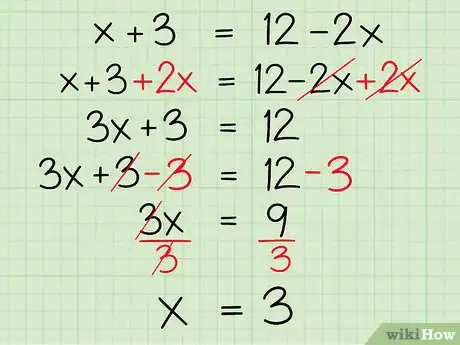









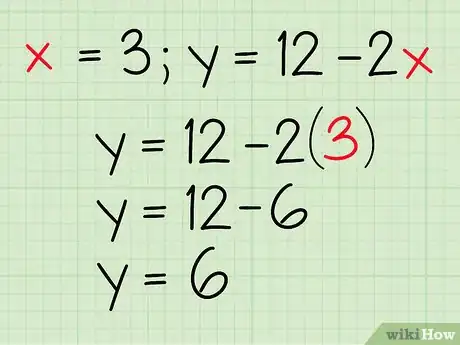


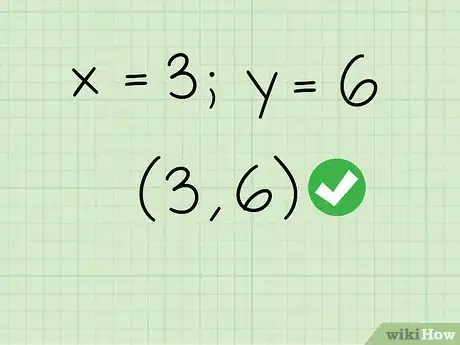








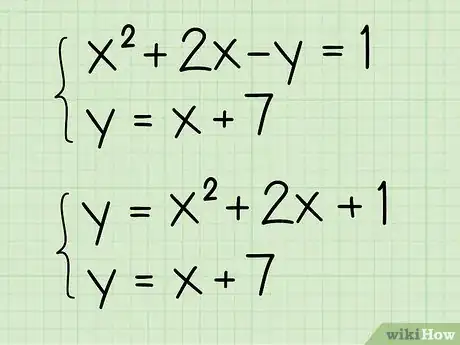



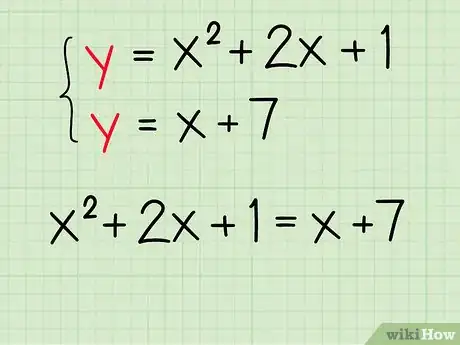




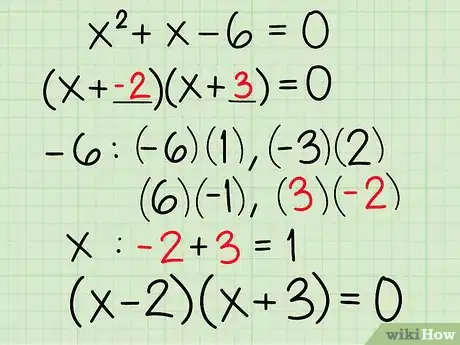






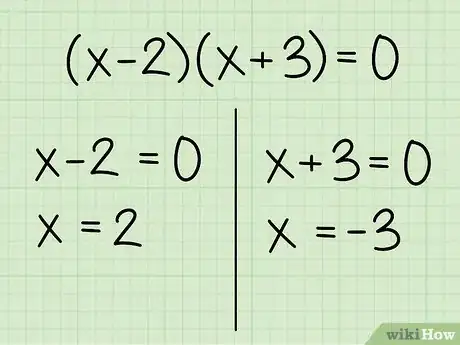










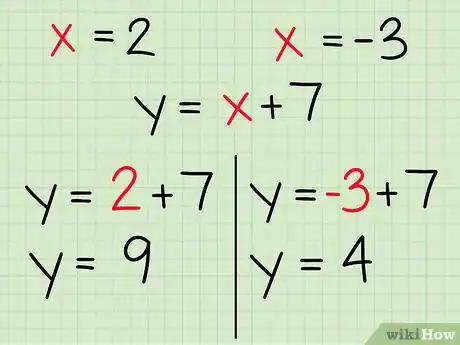




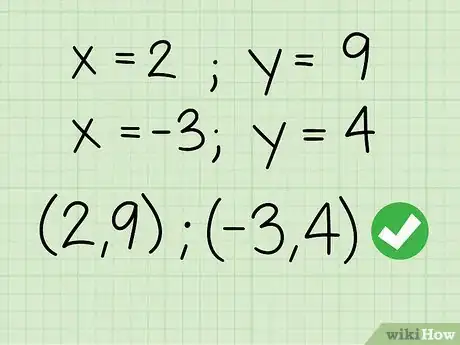
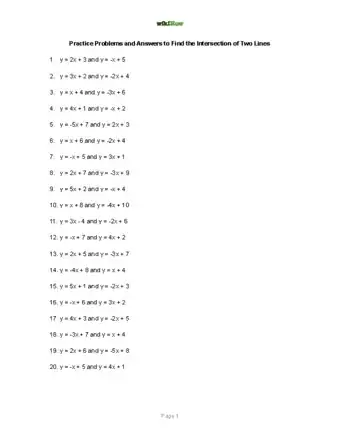

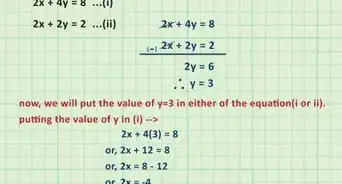
-Step-13.webp)
-Step-24-Version-2.webp)

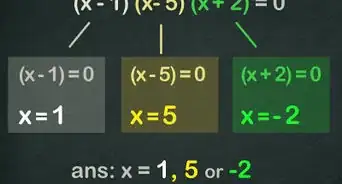
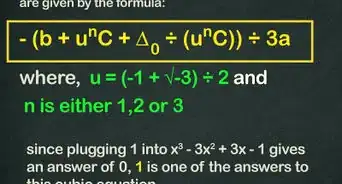

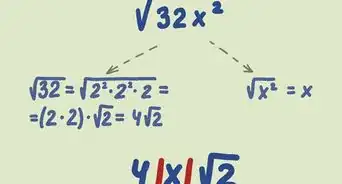
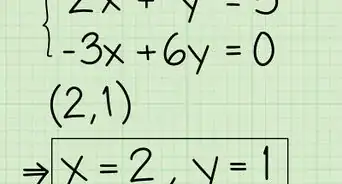

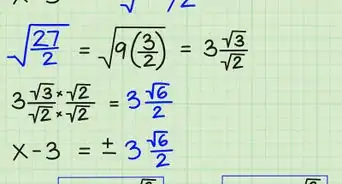

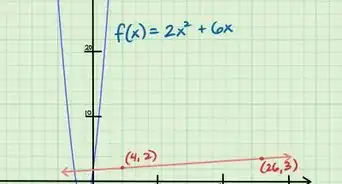











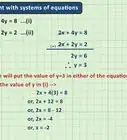
-Step-13.webp)
-Step-24-Version-2.webp)


































